How and how to treat onions from worms?
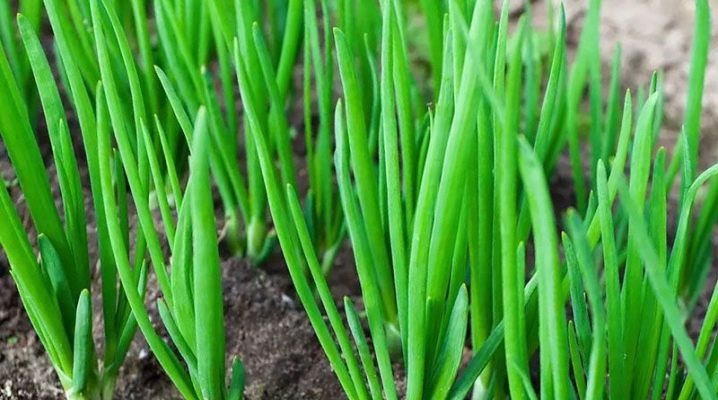
Onions are often affected by various pests, and it is the worms that start in the beds that cause the greatest damage to this plant. In this article, we will figure out how to understand that parasites have appeared on the onion bed, which of them precipitate onions most often, and by what means you can fight them.
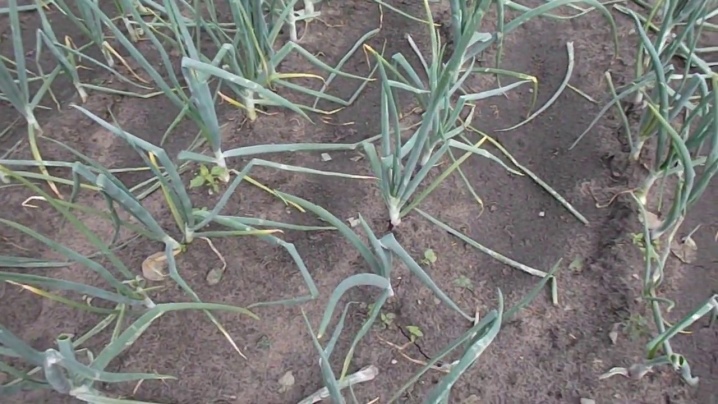
Signs of defeat
It is not difficult to understand that worms attacked the green onion. This can be determined by the signs that appear on the plant after the attacks of parasites. First of all, onion foliage suffers, which turns yellow, and subsequently also dries up.
Weather conditions play a special role here. So, the onion begins to dry after the bulbs are damaged by the larvae only at high temperatures and low humidity levels. If rainy days fall, then the plant begins to rot.
There are other symptoms indicating that harmful insects have bred on the onion beds. So, the parasite actively eats the plant, affecting its root system, drinks its juices. Because of this, the onion grows worse, lags behind in development, its immunity decreases sharply, an unpleasant smell of rot arises, which only intensifies if the shoot has been broken off.
On worm-like bulbs, the heads and roots of which have been affected, mold and rot are formed, spreading mainly to the stem and root system. A whitish coating can form on the feathers, the bulbs themselves are deformed, and the roots from the bottom dry and fall off over time.
It is worth considering that parasites can infect not only the plantings growing in the beds, but also the harvested crop, which eventually decays, acquires an unpleasant odor, and then disappears.
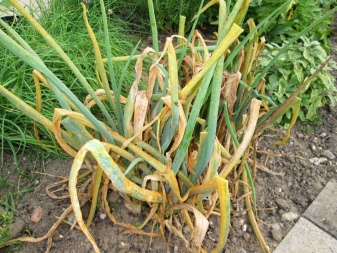
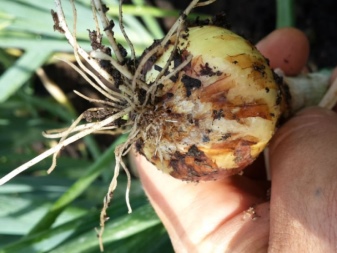
What kind of worms eat onions?
Most often, onion beds are affected by a parasite such as a root mite. It can be white or yellow. This parasite feeds on a bulb, and it also lives there. Subsequently, the bulb begins to rot. If conditions unfavorable for the parasite arise, it goes into hibernation. However, as soon as the environment becomes comfortable again, the pest precipitates the onion again.
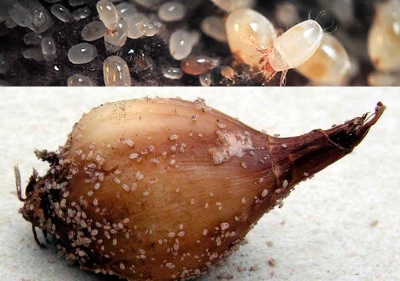
Hoverfly larvae also often precipitate this plant. An adult begins to lay eggs somewhere in early May, while the dirty-white worms themselves hatch a week later. It is they who eat the onion pulp. Such larvae may well hibernate in the upper layers of the soil. With the onset of warmth, after a couple of weeks, they transform into an adult insect and begin to actively reproduce, producing even more parasites.
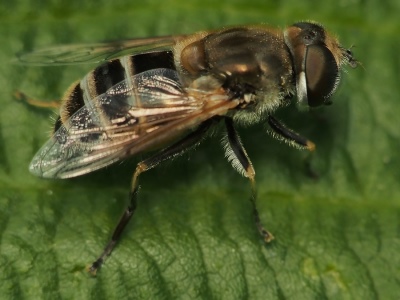
Onion fly larvae also cause great harm. As a rule, the adult parasite will lay eggs on onion seedlings and in the surrounding soil. After a few days, the larvae hatch, having a dirty white color. They are placed in the rhizome, which they feed on.
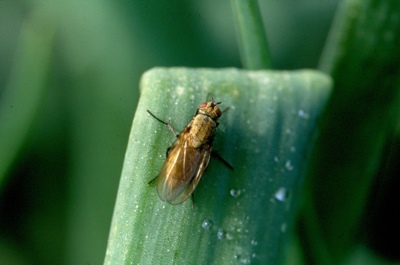
Another dangerous parasite is the stem nematode. The danger of this pest lies in the fact that it is able to destroy the onion in a week by sucking the juices from its foliage and bulbs, which leads to rotting of the root and subsequent damage to the plant. The adults and larvae of this parasite are in many ways similar; they are threadlike worms of light or yellowish color.

The onion weevil can also be attributed to the number of parasites that feed on onions very actively, which affects the planting stem, which prevents the good development of the onion head. An adult parasite begins to lay eggs in the first half of May.Subsequently, two weeks later, worm-like larvae of yellow color begin to appear, which, along with an adult, infect the onion.

Onion moth larvae also cause great harm. This harmful insect causes damage to the stem and roots of the onion, which leads to rotting of the root system and the subsequent death of the plant. An adult insect lays eggs in onion stalks, which occurs mainly in late spring. Already a week later, greenish larvae begin to hatch, the size of which can reach around 1 centimeter. A distinctive feature of such larvae is the presence of brownish warts on their body.

Often, onion plantings also affect thrips. They can also often be found in the storehouse where the collected bow is located. This parasite lays eggs in onion stalks. Subsequently, yellowish larvae begin to hatch, which attack the plant, causing enormous harm to it: because of them, the onion stops growing, its bulbs become smaller, the seedling rots.
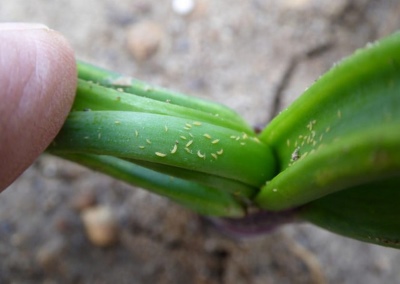
Another pest of onions is the wireworm, which is the larva of the click beetle. This harmful insect infects the roots of the plant. The development of the wireworm lasts for several years, and all this time it lives in the ground, periodically destroying parts of the onion, which causes the onion stalk to dry out.
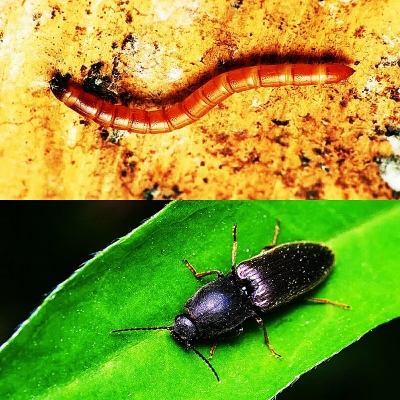
Folk remedies
Many summer residents prefer folk remedies, since the latter are safe and economical. Such solutions can be easily prepared at home from available tools.
However, we note that such drugs work best in cases not started, when the parasite has not yet had time to breed. Otherwise, folk remedies will be ineffective, and you will have to resort to using chemicals.
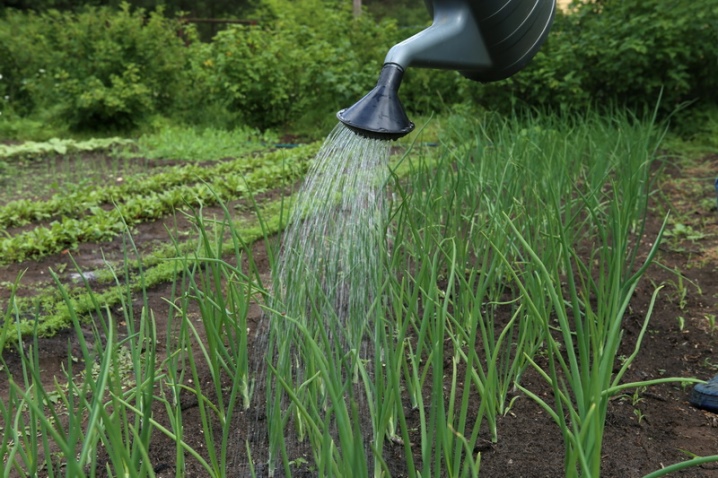
Ammonia
Treatments with such a remedy are often considered among the most effective in the fight against worms. The effectiveness of ammonia is due to its specific smell, which does not kill, but allows you to get rid of most of the parasites that live in the onion garden.
A solution is prepared based on this agent as follows: 10 milliliters of ammonia is diluted in a bucket of water. The resulting composition can be used to treat plants. This should be done 2 times with an interval of a month.
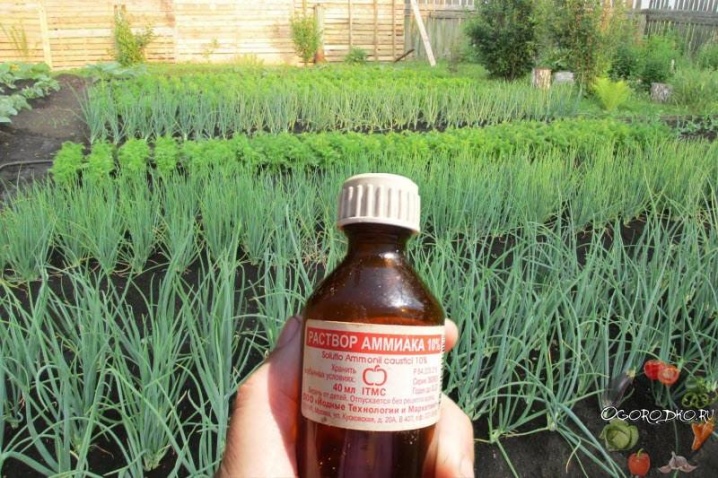
Planting carrots and tomatoes
Planting some plants, such as carrots and tomatoes, can also help repel both worms and onion flies. Many pests dislike these crops, and therefore they will not choose a place of residence next to them.
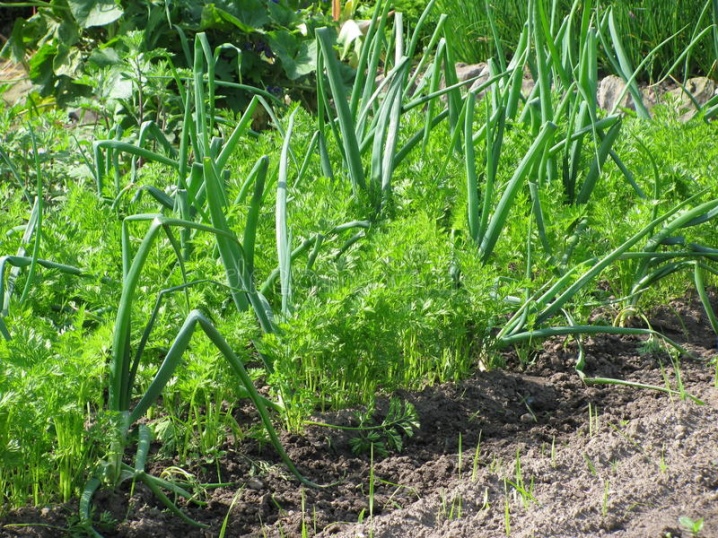
Saline solution
The saline solution is simple and, most importantly, economical in terms of preparation. It effectively fights against harmful worms, helping to cure onion beds from them. The solution itself is prepared as follows: a bucket of water is taken, 300 grams of ordinary salt is dissolved in it. After cooking, you can carry out processing: either spray or pour the mixture on the onion. Please note that, most likely, this procedure will have to be repeated at least one more time.
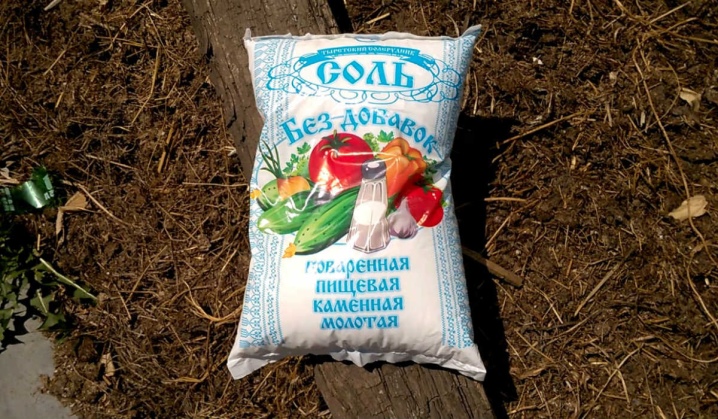
Soap solution
A soap-based solution, despite all the simplicity of its manufacture, also helps to deal with harmful worms. This tool has a peculiarity: after processing it, a film forms on the onion feathers, which for a long time protects the plant from attacks from parasites. Such a solution is prepared as follows: rub 50 grams of laundry soap on a grater and dissolve in a bucket of boiled water.
Next, the resulting mixture is applied to diseased plantings. The second time you can treat the plants with this remedy after a month. It should be borne in mind that the mixture holds well on the plant, and therefore it remains effective even in rainy weather.
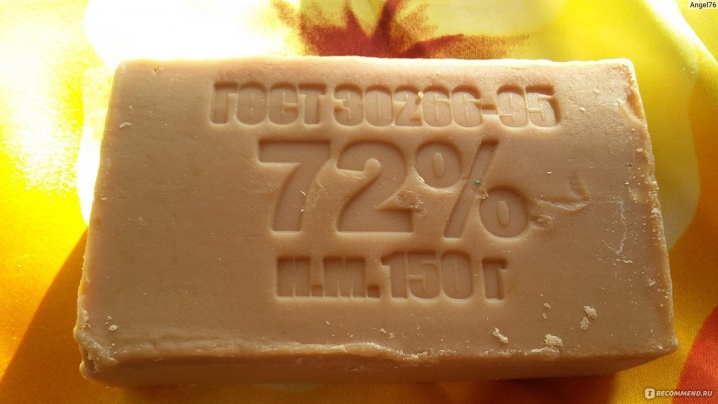
Dandelion decoction
To prepare such a solution, dandelions will be required, the collection of which is best started in late spring or early summer.The mixture will require 200 grams of dandelion roots and a liter of hot water. The roots must be finely chopped and mixed with water, after which the mixture must be left for tincture in a dark place for 48 hours. After the required time has elapsed, the mixture must be thoroughly filtered through cheesecloth and diluted with 10 liters of boiled water. Further, the plants can be sprayed with the resulting mixture, for this it must be poured into a spray bottle. If necessary, the processing can be repeated.
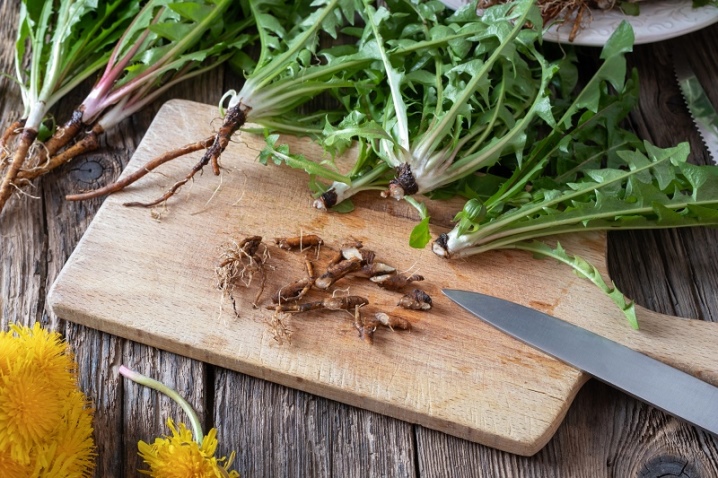
Wood ash
A solution based on wood ash not only helps to get rid of harmful worms that infect and destroy onions growing in the garden, but also saturates the plant with useful substances, and therefore it can be used as a top dressing. To prepare the mixture, you will need 1 glass of ash and 10 liters of water. Instead of ash, by the way, it is permissible to use tobacco foliage, making the mixture more effective.
Further, the composition is thoroughly filtered, after which it can be used on plants. If necessary, the processing can be repeated.
Sometimes wood ash against parasites can be used dry. It just needs to be scattered over the area in the area of the onion beds. However, this method is suitable for preventing the emergence of pests, rather than controlling them.

Potassium permanganate
The tool is effective in the fight not only against parasitic worms, but also against diseases of fungal origin. In addition, it improves the quality of the land, which also has a positive effect on the condition of the grown plants.
A solution based on potassium permanganate is prepared at the rate of 0.5 level tablespoon per 5 liters of water. Mix all the ingredients, then treat the affected plants with the mixture. Please note that it is recommended to repeat this procedure only after two weeks, more often you should not do this.
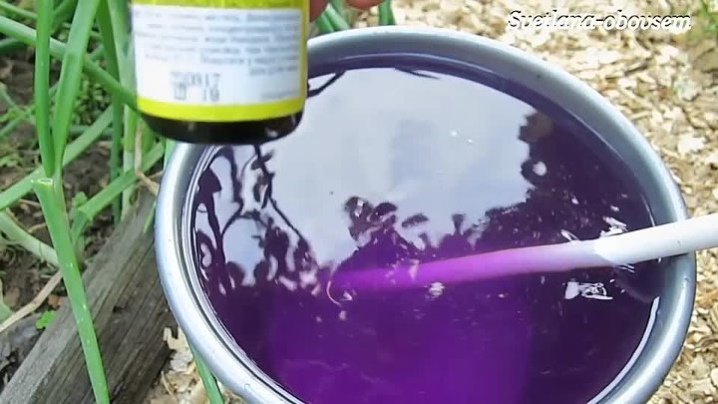
Copper oxychloride
Copper oxychloride is also effective against larvae of parasites and worms. The product is prepared as follows: 20 grams of the drug is diluted in a bucket of boiled water, after which 20 grams of laundry soap is added to the mixture. Soap can be omitted if desired, but it helps to improve the effect of the product by fixing it on the leaves. Further, the solution can be used to combat parasites, but it is not worth it to frequent it.
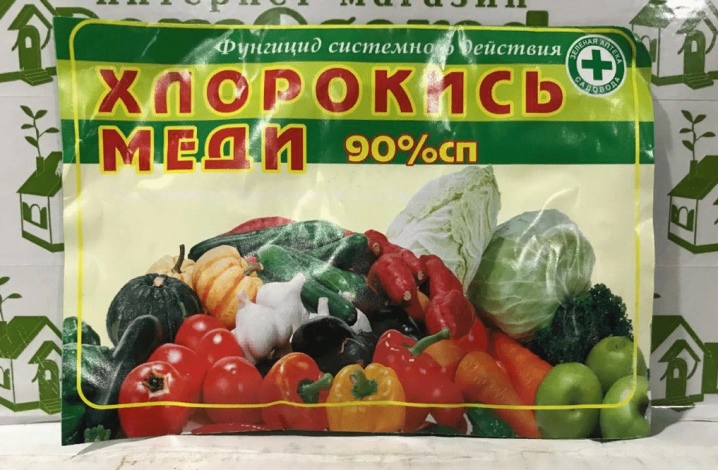
Biological preparations
Biologicals are suitable for growing onions at home or when you don't want to use chemicals. Biologics are completely harmless to both humans and the environment - this is their main advantage. Moreover, they are very effective in the fight against parasitic insects.
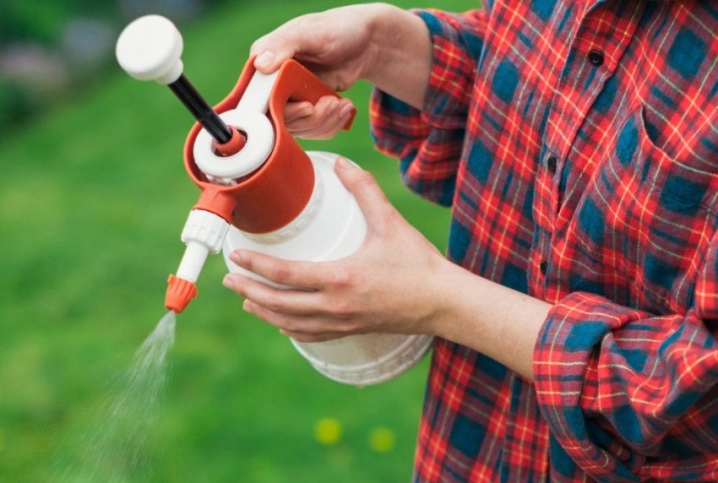
"Trichodermin"
It is an effective biological fungicide that helps save onions not only from pests, but also from phytopathogens, which cause a number of different diseases. To use such a tool, it is necessary to prepare a solution based on it. To do this, you need 30 grams of the drug and 3 liters of boiled water. Mix all the ingredients and then process. It is recommended to do this in the absence of wind and heavy rainfall. After 10 days, it is recommended to repeat the procedure to consolidate the effect; it is often not worth treating the plants.
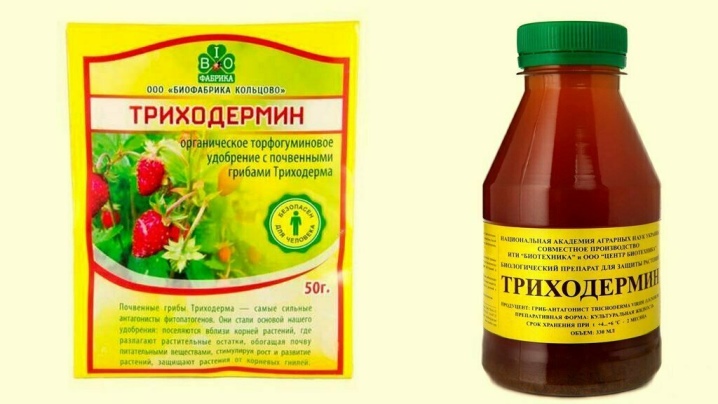
"Metronidazole"
This medication can be bought in the form of tablets with tablets at the pharmacy. It is able to have an antibacterial effect and rid the onion from the attacks of parasites. A solution based on "Metronidazole" is prepared as follows: 4 tablets are dissolved in a bucket of boiled water. The resulting mixture must be watered on the onion beds, using about 5 liters of solution for each square meter of land.

Prevention measures
Preventive measures help prevent many problems from occurring.
So, first, you need to regularly examine the bow for symptoms of damage. Moreover, this applies not only to onion beds, but also to the already harvested crop, because it is also often attacked by worms. This will help to identify the problem in time in order to start treating the plant in the early stages, or to prevent the spread of a harmful infection.
Provide quality plant care. Do not forget about regular watering, but waterlogging should not be allowed either. For good growth and proper development of plants, it is also important to feed - this will significantly affect their condition, improve their immunity.
Do not forget about the elimination of weeds, because it is on them that parasites often live, eventually moving to cultivated plants. The same can be said for old foliage. It needs to be removed from the site after the final harvest, because harmful fungi can hide under it, as well as parasites with larvae, which are activated the next season when it gets warm.
Carry out preventive treatments regularly, even if there are no parasites in the garden. This will help prevent them from occurring.














The comment was sent successfully.